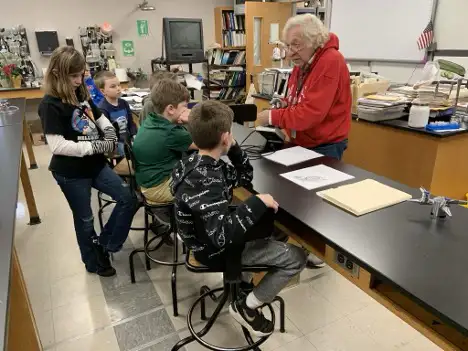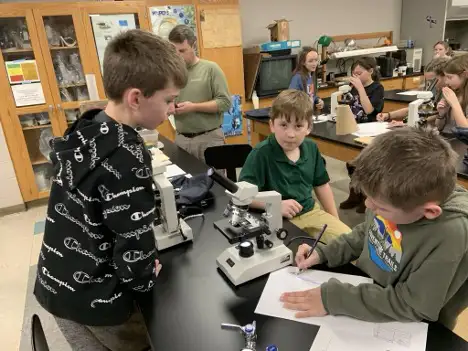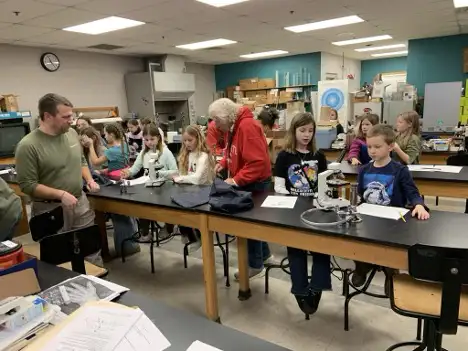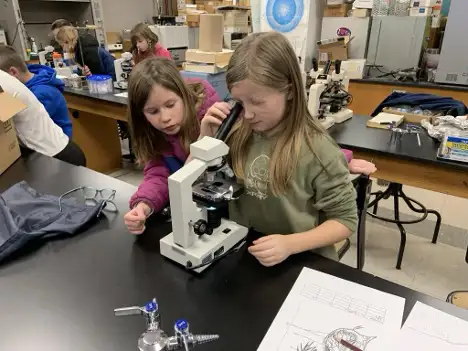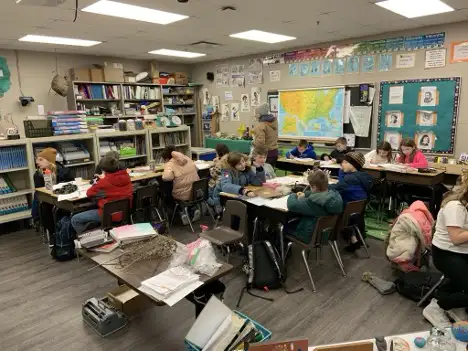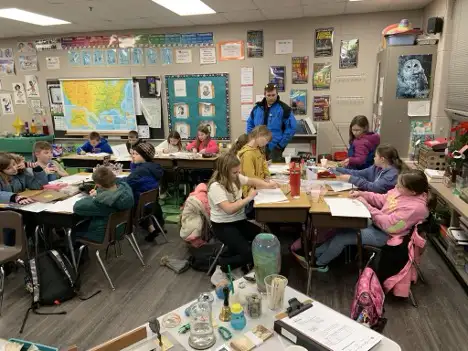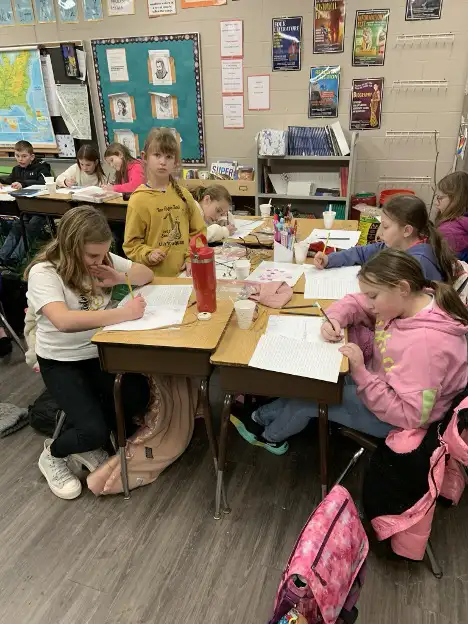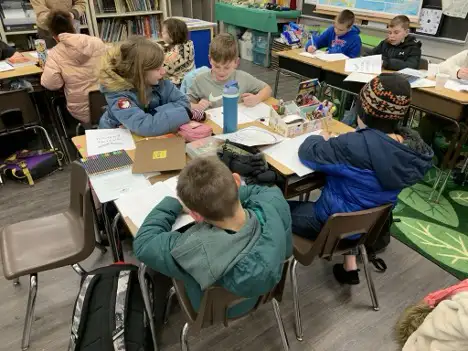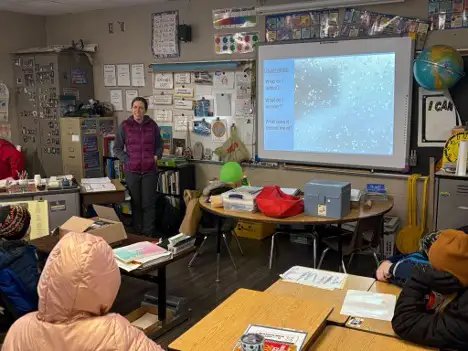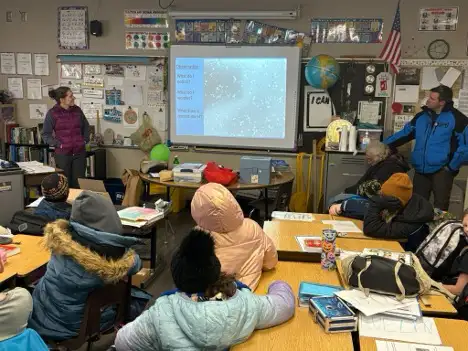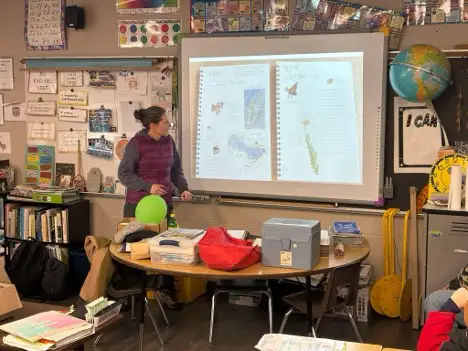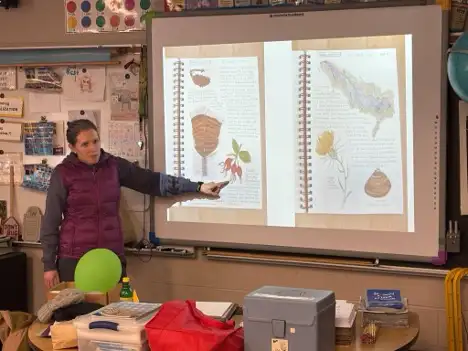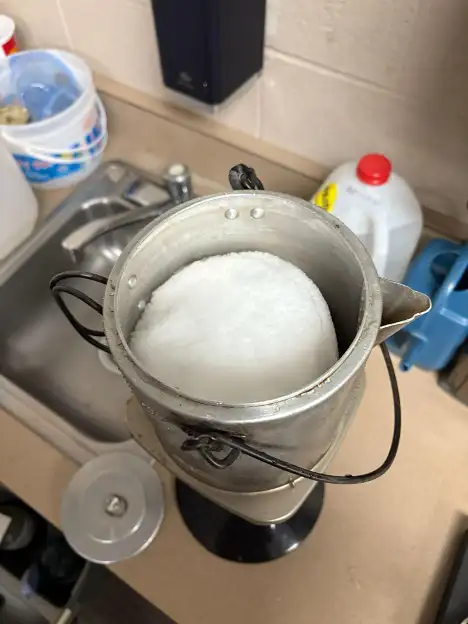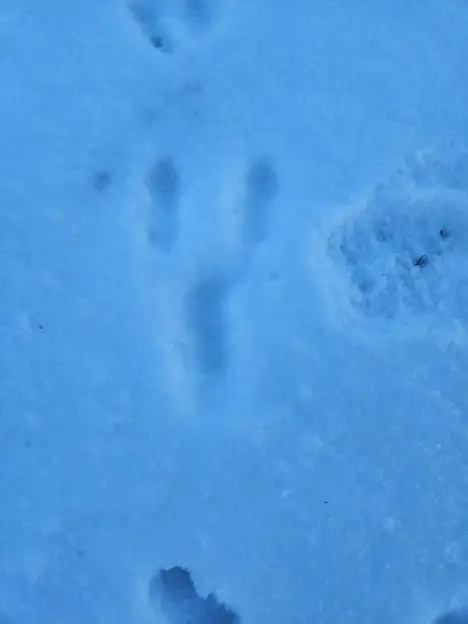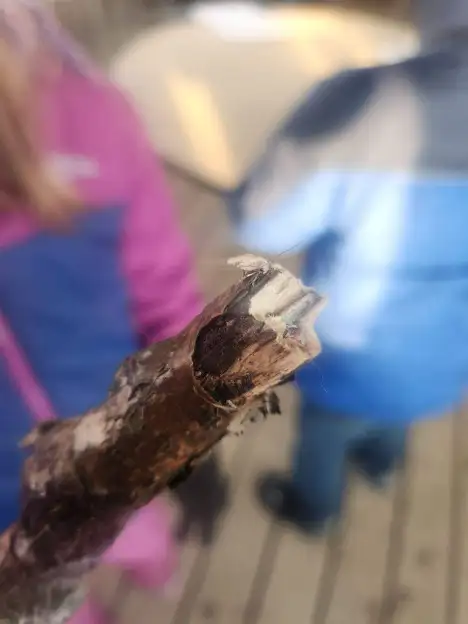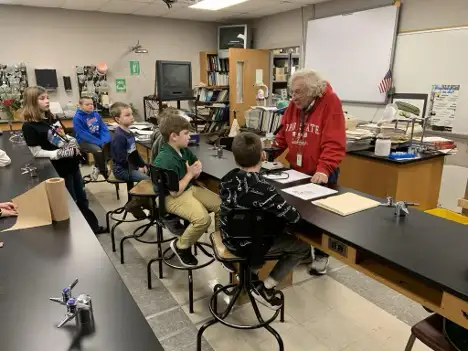The new year has been a busy one for the Benjamin Logan Environmental Science Club (ESC). At their first session of 2025 the twenty-five club members experimented with daphnia, small crustaceans that form the food web base in numerous ponds and lakes. Because many of the creature’s organs are transparent, it is possible, under magnification, to measure the daphnia’s heart rate. After learning how to use a compound light microscope, the ESCers took control heart rates. Daphnia have a heart rate that would send humans to the emergency room or graveyard. Numbers as high as 300 beats per minute were reported. Following the establishment of a baseline, the ESC scientists added a drop of a solution to simulate the addition of a pollutant to the aquatic environment. A 1% caffeine solution and a 5% ethanol were used for this purpose, and their effect on daphnia heart rate was measured. The students were impressive in their ability to successfully collect and analyze data from the activity.
“Neither snow nor rain nor heat nor gloom of night stays these couriers from the swift completion of their appointed rounds” is the mantra of the United States Postal Service. Snow and cold don’t deter ESCers either. The Benjamin Logan Land Lab was the setting for the most recent ESC session. The objective was to observe nature in winter.
The program began in the classroom where Logan County Land Trust director Catherine Carter helped prepare the students for keeping a nature journal. She spoke to the students about Wilson “Snowflake” Bentley, a self taught genius with a singular obsession for the photographic recording of snow crystals, a feat that had never before been accomplished. It was through his dedication, inventiveness, and persistent observation that we know today about the delicate beauty of snowflakes. Mrs. Carter encouraged the students to think about three questions: 1. What do I notice? 2. What do I wonder? and 3. What does it remind me of?
The students then braved an Ohio winter to explore the land lab, observe, and collect objects of interest. After returning to the classroom, the ESCers made a close study of the objects they had returned with, and used pencil, colored pencil, and watercolor to translate their observations into artwork and written description. The experience was enhanced by the enjoyment of hot chocolate and homemade cookies.
The students also conducted a scientific inquiry into snowmelt water volume. A small saucepan was packed with snow and melted in the classroom. The resulting liquid was measured and compared to the capacity of the pan. The result was that 1.9 liters of snow yielded .89 liters of liquid water.
The Environmental Science Club is cosponsored by the school district and the Logan County Land Trust and is in its 8th year of operation. The club hosts guest speakers, conducts learning activities such as the dissection of owl pellets, and also participates in service projects such as the construction of a chimney swift tower on the school campus. The Environmental Science Club is directed by Bruce Smith, Bob Stoll, Spencer Reames, Ryan Kerns, and Catherine Carter. For more information about the ESC contact Bruce Smith at smithb@benjaminlogan.org.
